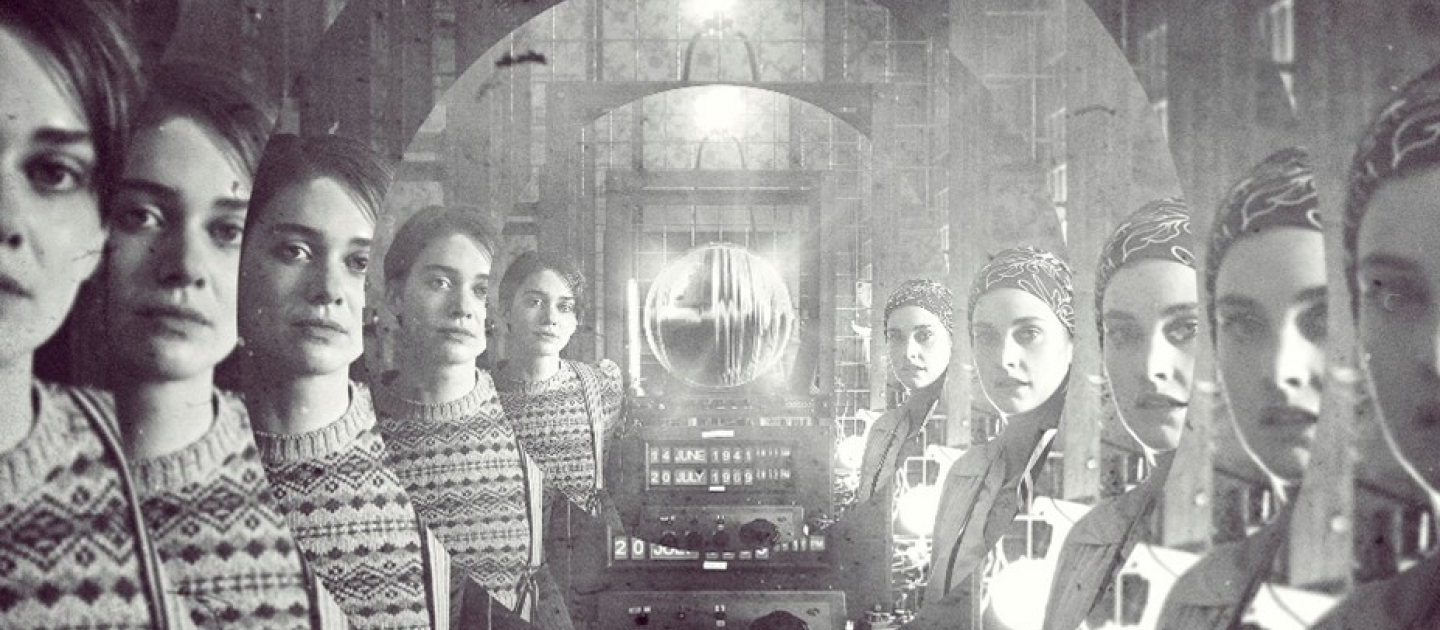Low-budget but imagination-rich, this singular sci-fi crosses a vintage found-footage aesthetic with an inspired time-travel concept. It’s 1938, and two brilliant sisters — Thomasina (Emma Appleton) and Martha (Stefanie Martini) — have invented a machine that can anticipate future radio and television broadcasts. The device (named Lola) allows them to support themselves with bullseye bets on upcoming horse races, as well as revel in the cultural output of the decades to come. When WW2 strikes, however, Lola takes on life-saving potential.
As with every time-travel story, there’s the domino effect to be considered. Lola ends the Blitz, but its timeline-meddling paves the way for a darker future — chillingly realized by the film’s clever manipulation of real archival footage — and an ideological schism between the sisters. The movie’s tight runtime doesn’t allow for full exploration of this emotional fallout, but the actors fill in the outlines enough to make this flaw less gaping than niggling.
Shot with vintage film cameras, the movie looks like a product of its setting, but it absorbs some of the modernism of the contraption's intercepted broadcasts — and it's this beguiling anachronism (plus its narrative ingenuity) that ultimately win out to make Lola a fascinating sci-fi, despite some tantalizingly unrealized potential.
Synopsis
Sussex, England, 1938. Shortly before the outbreak of World War II, Thomasina and Martha Hanbury, two ingenious sisters, create LOLA, a miraculous machine.
Storyline
In 1938, two sisters invent a machine that allows them to anticipate future TV and radio broadcasts and reshape the future.
TLDR
A timeline in which Stanley Kubrick never existed is indeed a terrifying concept to behold.
What stands out
Just as the sisters initially use Lola to peek into a future alive with the electric, revolutionary talents of Stanley Kubrick, Bob Dylan, and David Bowie (Martha’s favorite), the movie gives us a terrifying glimpse of the kind of cultural landscape that might have existed had the war ended differently. In its horrifying vision of a fascist future in which Bowie doesn’t exist — or, perhaps, became a dentist instead — a new popstar has taken his spot in the zeitgeist: the Bowie-inflected Reginald Watson. Instead of singing about ground control and Major Tom, Watson’s pseudo-‘70s songs like “To The Gallows” and “The Sound of Marching Feet” contain stark orders like “do not fraternize with radicals and perverts” and “if your friends don’t sing along, call the police.” Elements like these speak to the deep imagination at the heart of Lola and are so well-thought out that you can’t help but wish the movie devoted more of its runtime — or extended it — to make space for further speculation of the uncanny, terrifying future it has dreamt up.



